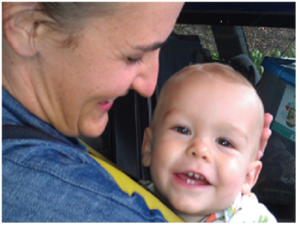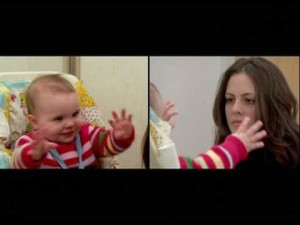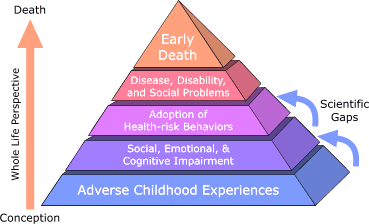 CLICK HERE to BUY “Don’t Try This Alone”
CLICK HERE to BUY “Don’t Try This Alone”
In March 2013, I was standing unknown in a crowd of professors and therapists at a UCLA conference, and noticed a quiet gentleman on my right. I’d seen his photo online. “Dr. Schore?” I asked. “Yes,” said Allan Schore, turning calm eyes on me.
“I’m so grateful for all you’ve done to show that babies can’t control emotions, that’s the mother’s job to model, and emotions are ok,” I blurted, suddenly in tears. “I’m writing a book on what it feels like on the inside, when we don’t get that as an infant.”
Dr. Schore didn’t flinch; his eyes grew wide with empathy. He got it. He got a total stranger, right by the conference stage, got that I had walked through a hell of emotional pain to study this. He got that I was feeling love for him because he’s shown there’s a scientific reason for the pain. He got that “emotions are ok” and only emotions from a caring other can heal this, so he gave me emotions: presence and compassion. On the spot. “We see it every day,” he said.
Just sayin’: he walks the walk.
UCLA professor Allan Schore is a world leader in Attachment Theory. He’s known as “the American Bowlby” after British psychiatrist John Bowlby who first wrote about attachment in the 1950s. [FN1] Schore was among the first to put together the latest brain science on how an infant’s brain forms biologically (“developmental neuroscience”), with the early psychology of the infant mind (“developmental psychoanalysis”).
Dr. Schore’s 9-28-14 Oslo speech “The Most Important Years…the Right Brain and Its Importance” is a must-see to understand infant developmental trauma. He calls it “trauma in the first 1000 days, conception to age two.” Schore reviews how the theories he’s published since the 1990s are being proven to be hard science by today’s brain scan technologies (content starts minute 8): https://www.youtube.com/watch?v=KW-S4cyEFCc
Schore is known for documenting the “origin of the self”– what, scientifically, is the “Self”? What is it that makes me, Me?
He calls it “the origin of the early forming subjective implicit self.” It’s entirely subjective; each infant has a different experience. It’s “implicit memory” because the self forms in infancy when memory is only subconcious. It all happens years before we have thought and conscious “explicit memory” at age two or three.
This isn’t mere geek-speak; the mental, emotional, and physical health of all humans depends on it. We can’t remember what happened before age 3 when our self was formed, but the experience had massive impact. It’s all still “down there,” driving our feelings and behavior big time for the rest of our lives.
When the self is damaged during formation in early infant and childhood, a person can feel miserable all their life. The ACE Study shows this often leads to biological disease and premature death.
The Self and Emotions : Secure Attachment
 Babies are born with a massive level of emotions. Schore reports that they are overwhelmingly dependent on the mother to show them how to handle it all. An infant’s brain doubles in size “from the last trimester of pregnancy through the second year,” he says. “At birth, there are hardly any cortical (conscious thinking brain) areas that are myelinated and online… so it’s impossible for the baby to regulate its own emotions…
Babies are born with a massive level of emotions. Schore reports that they are overwhelmingly dependent on the mother to show them how to handle it all. An infant’s brain doubles in size “from the last trimester of pregnancy through the second year,” he says. “At birth, there are hardly any cortical (conscious thinking brain) areas that are myelinated and online… so it’s impossible for the baby to regulate its own emotions…
“The mother is the regulator of that baby,” he says, and this shapes the development of its entire brain. “Over the first year… the mother’s interactions are shaping the very wiring of those higher regulatory centers… Attachment communications which are emotional are forging the connections in the early developing right brain… The right brain literally is imprinted by these attachment relationships while it is being created…” FN2
It’s all subconscious. With “secure attachment,” when a baby cries, the mother “attunes” to it. An “attuned” mother doesn’t say “think” or “ought to.” She feels a strong, emotional urge to comfort her baby; she subconsciously intuits whether her baby cries because it’s hungry, wet, or tired. “The mother is able to pick up the baby’s communications,” Schore says. “She is not doing this by language, there is no thinking or language before age two. She is picking up bodily-based nonverbal communications: facial gestures, auditory tone of voice, and tactile expressions. The attachment communication is more than between the mother and the infant’s minds; it’s between their bodies…
“She is psychobiologically attuning to the internal rhythms… of the baby’s autonomic nervous system and central system arousal… It’s an attunement of mind and body. In doing so, she is regulating the baby’s rhythms and allowing the baby to create different emotional states that are associated with these different rhythms. This is not a matching of behavior; it is more of an intuitive matching of the internal rhythms of the baby.
“The baby is expressing these internal rhythms through the emotional communications it is sending back to the mother, in the prosody of the baby’s voice, or in the cry, or in the expression on the baby’s face, or in the gesture. They are matching each other’s subjective state. Now, when two people match their subjective states, there is a sense of empathy, there is a sense of a bond; a sense that ‘someone’s body is exactly resonating with my body.’ When that occurs there is an amplification of arousal, and this amplification of arousal leads to things like joy states.”
Infants also have no sense of self. Instead, Schore adds, there’s a “mother-baby continuum” for at least the first six months of life where the “dyad” (mother and child) often don’t know (and don’t care) where one person ends and the other begins.
We begin life as a sea of emotions, and then mom models for us again and again, that she can comfort our wild emotions. Unconsciously we pick up that skill. After we cry and mom comforts us for the millionth time, one day we feel our way to stop crying because we’ve “internalized” mom’s comfort. We subconsciously learn to manage emotions, to both enjoy good emotions, and also–very important–to tolerate and be able to fully feel negative emotions. Without fearing or repressing them.
This is also called “Emotional Object Constancy.” Mom was an external object, but now we’ve taken her image inside us, so we feel loved and emotionally secure 24×7, even when we’re alone.
Our “self” begins when we first start to “regulate” our own emotions (“affect”) this way. When we realize we can feel our emotions and also modulate them, without screaming for someone else to do it for us? That’s when we first realize that we are not merely part of mom. We’ve got some independent “self.” “Essentially, one’s self-concept is focused around a positive sense of emotionality in the self,” says Schore.
Insecure Attachment and Trauma
Back to how all babies are born with a massive level of emotions. We’re all supposed to receive all that attuning above, then we’re fine.
Or not.
What if we’re an “Or Not” baby? What if we cry but no one comes? Or what if someone comes, but they don’t have the neural equipment to attune, or they’re too distressed to attune? “That baby learns that there is no comfort, that emotions are terrifying, and the world is a scary place,” Dr. Schore says. His colleague Dr. Ed Tronick shows this graphically in the “Still Face Experiment”– click for video. [FN3]
That baby often does not develop much of a self. To the extent no one showed it how to manage emotions, the day could not come when it could “regulate like mom.” It can’t regulate, so it can’t individuate.
That is really uncomfortable; it’s what’s behind the feeling that “I have a hole in me.”
All the above leave deep damage, even just passively.
Plus, on top of that: what if we cry, someone comes, and then there’s active aggression; we’re yelled at or physically maltreated?
A whole lot can and does go wrong for a baby. I call that a lot of Adverse Infant Experiences (AIE). “Aaiiee!” Double ouch.
Schore says this is the root of developmental trauma. “In trauma there is an intense negative state about the sense of self,” he says, with “extremely high states and low states of arousal, an inability to internally regulate their state or to use other people to help them regulate their state and bring them into a sense of comfort.”
With insecure attachment, he says, “there are problems that the caregiver is having emotionally… There is anxious insecure attachment, where the mother is preoccupied or unpredictable… There is also avoidant insecure attachment, where the mother is mostly cold…
“And there is ‘mind blindness,’ so to speak. There are some mothers who cannot read the tone of the baby… depressive mothers have problems reading facial expressions, especially the facial expressions and gestures of the baby. You see inter-generational transmission of these deficits…”
Schore first showed this scientifically in his three blockbuster books Affect Regulation and the Origin of the Self (1994), Affect Dysregulation and Disorders of the Self, and Affect Regulation and the Repair of the Self. FN4
“Affect regulation” means we can freely feel our emotions without being emotionally blocked, we can enjoy our emotions–yet also be “on top”of our emotions, so they don’t feel overwhelming, painful or frightening. If not, we suffer “affect dysregulation ” i.e., some level of painful emotional chaos.
We all know people who either can’t or won’t access their emotions, or others whose emotions go out of control to where they and those around them feel miserable. Others swing to both extremes, but never simply enjoy their emotions without freaking out or hurting people.
The good news is: there is repair, as Dr. Schore’s third book lays out in detail. At a support group, Al Anon meeting, therapist’s office, or with friends, repair means we find other humans to do exactly what Schore did for me on the floor of that conference: be present emotionally with another emotionally-attuned human being.
If we can sit for an hour and attune to another human willing to share our emotion state and help us learn to gradually shift and modulate it, we learn to “regulate.” Brain scans now show that we can literally repair the neural circuits which remained painfully out of tune when we didn’t receive human attunement as kids.
It takes time, perseverance, courage, and real human beings like Allan Schore. I’ve met them–they’re out there. Find them.
——————-
Kathy’s news blogs expand on her book “DON’T TRY THIS AT HOME: The Silent Epidemic of Attachment Disorder—How I accidentally regressed myself back to infancy and healed it all.” Watch for the continuing series each Friday, as she explores her journey of recovery by learning the hard way about Attachment Disorder in adults, adult Attachment Theory, and the Adult Attachment Interview.
Footnotes
FN1 Bowlby, John, “The Nature of a Child’s Tie to His Mother,” British Psychoanalytical Society, London, 1958; “Attachment and Loss,” New York, Basic Books, 1969
FN2 Schore, Allan N., PhD, “Affect Regulation and Mind- Brain-Body Healing of Trauma,” National Institute for the Clinical Application of Behavioral Medicine (NICABM), June 15, 2011
— Schore, Allan N., “The right brain implicit self lies at the core of psychoanalysis,” Psychoanalytic Dialogues 21:75–100, 2011 www.lifespanlearn.org/documents/2011Handouts/Schore/Schore%20Psych%20Dialogues%2011.pdf
—Interview with Allan Schore – ‘the American Bowlby,’ by Roz Carroll, UK ; The Psychotherapist, Autumn 2001, www.thinkbody.co.uk/papers/interview-with-allan-s.htm
FN3 Dr. Ed Tronick of the U Mass Boston’s Infant-Parent Mental Health Program did his first “Still Face Experiment” work in 1975; his 2007 video has over 1.3 million hits. First a mother and child play in a responsive, attuned way, so the baby learns to interact with the world. Then she suddenly stops attuning. Video at: www.youtube.com/watch?v=apzXGEbZht0&feature=youtu.be
FN4 Norton Textbook Series on Interpersonal Neurobiology:
— Schore, Allan N., “The Science of the Art of Psychotherapy,” April 2012; 480 pages
— Schore, Allan N., “Affect Regulation and the Origin of the Self,” Norton textbook May 2003; first edition 1994; 432 pages
41,616 total views, 6 views today




Thank you so much for this…I am a 69 year old Brit, in my second year of trauma therapy….now I get it….as my therapist said “this will take a while…” Thanks again, and keep up the singing….:-) – Stephen
Pingback: Empathy: Why Executives Need It
Pingback: Nurturing Child's Right Brain
So glad that your book will be out soon.
Will definitely read it.
Thanks for all the info given on your site. Definitely helped me
in my recovery
Kathy, I am a retired pharmacist and author. Doctor Schore is my favorite mental health expert, for all his qualities but particularly for his pioneering work in the right cerebral hemisphere “unconscious”!! This article is by far the most easily comprehended exposition about creation of the “self.”!! Congratulations and thank you!! “Bill”
Wow! Your description of how you met Dr Alan Shore and what you said to him was enough to make me cry… He is definitely one of the guys that gets where we come from. I can’t even imagine what it would be like to meet him in person.
Pingback: What? Shame? – Blogs about human development
The most insufferable feeling I had most of my life was not having a sense of self. I don’t feel myself, my needs, my desires, as if there was only emptiness and boredom. Is it possible to develop such a sense of self as an adult?
Absolutely, but that’s why we need to sit with safe, platonic people and get the “software” from relating to them, which we never got as children from parents, because they just didn’t have it to give.
Pingback: Healing attachment trauma: a gateway to your true self. |
Pingback: pre-verbal memories are accessible to EMDR traumatic interventions | in2uract
Nice write up. He has lots of good videos on youtube that I wasn’t aware of that are very nice also. I am sure you know that. I need to look at more of his work this is interesting.